Rolling vs Global Shutter
Introduction
The shutter is a typical component of a camera, whether mechanical or electronic. For scientific cameras, mechanical shutters are typically slow and subject to maintenance as a frequently moving part, at Teledyne Photometrics our CCD, EMCCD, and CMOS scientific cameras use electronic shutters.
However, the way each format of camera sensor reads the signal off given pixels can be different, with the two major methodologies being the global shutter and the rolling shutter. This article will introduce and outline these shutter types and their advantages/disadvantages.
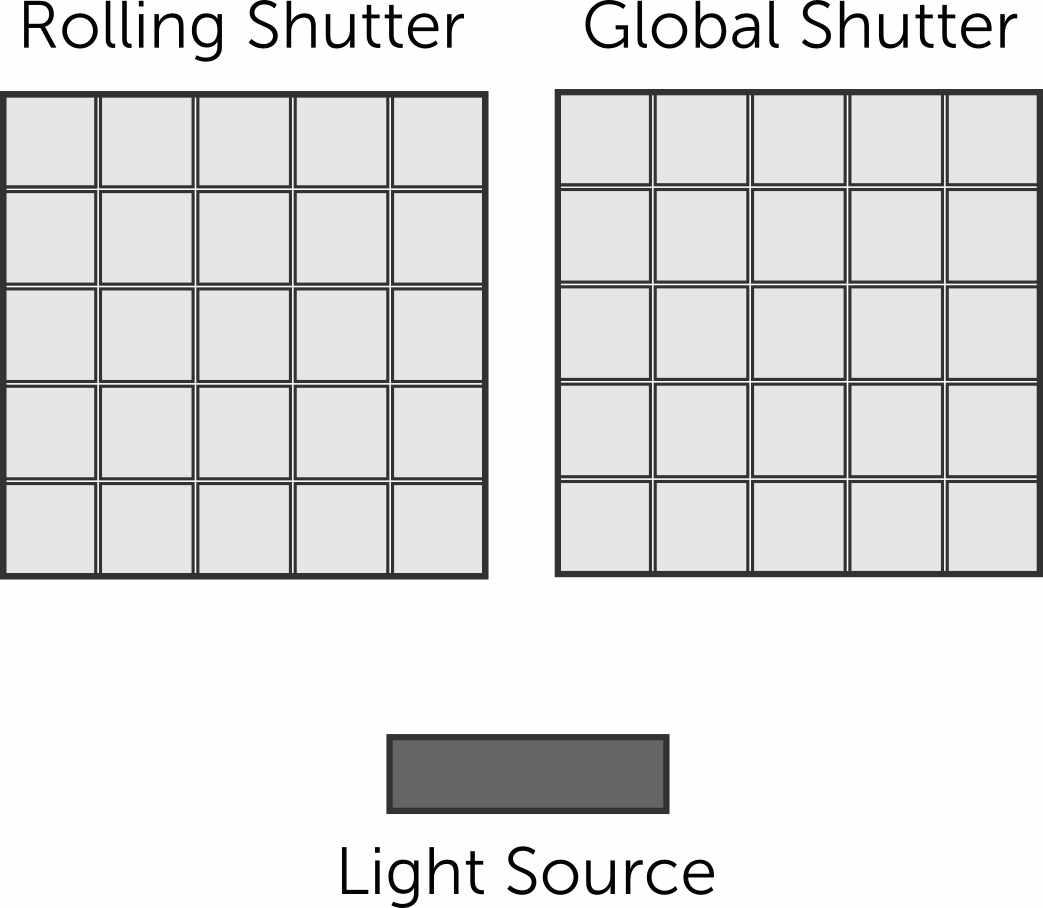
Figure 1: Rolling vs Global shutter. While a rolling shutter reads out row-by-row when exposed, a global shutter reads out the entire sensor.
Global Shutter
After a global shutter camera has been exposed to a signal from a sample, all sensor pixels are read out simultaneously, hence the term global shutter. This means that images obtained from cameras with these sensors are snapshots of a single point in time. This is advantageous when synchronizing camera exposure to the light source activation using hardware triggers (explored in the triggering article), as the exposure happens at the same time across the sensor. CCD and EMCCD cameras typically use global shutters and can operate as 'full frame ' imaging devices.
However, while this shutter mode has no time difference across the image, the readout is typically slow, especially when using CCD/EMCCD with global shutters as these technologies are limited in their readout rate due to only having one analog-to-digital converter (ADC). The more pixels on the sensor to transfer, the slower the total frame rate, even if the whole frame can be captured at once. In addition, a global shutter can result in increased read noise, limited framerates, and longer duty cycles for the camera.
Rolling Shutter
While global shutter reads out the entire sensor at the same time when exposed, some camera sensors readout row by row when exposed, with the readout 'rolling ' down the camera sensor rows, which is why this method is known as the rolling shutter. Each row takes a certain amount of time to read out (e.g. 10 μs), known as the 'line time ', meaning that the resulting image features a small time delay between each row. If a camera with a rolling shutter has 2048 rows (as in a typical 2048 x 2048 CMOS sensor), it means the top row is read out at time 0, while the bottom row is read out 2.048 ms later (10 μs multiplied across 2048 rows), this is known as the 'frame time '. This small time delay can add up across large sensors, which should be considered when imaging very fast samples. This concept of acquisition timing between rolling and global shutter is explored in Fig.2.
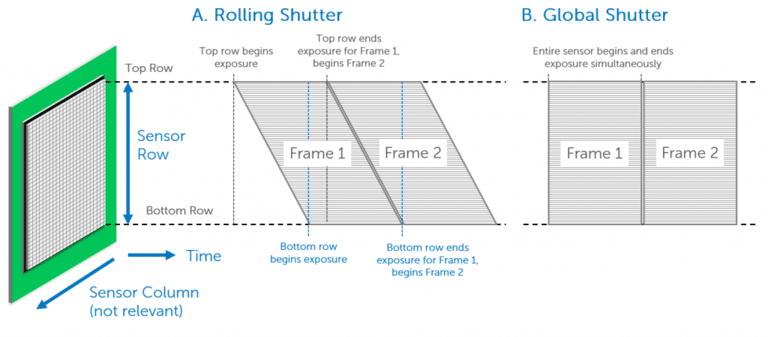
Figure 2: Readout timing for rolling and global shutter, with readout on the y axis and time on the x axis. A. Rolling shutter, acquisition
begins at the top row and rolls down to the bottom row for frame 1, then frame 2 begins at the top row after a delay. B. Global shutter,
the entire sensor begins and ends exposure simultaneously.
Rolling Shutter Artifacts
When imaging moving objects or moving a camera during acquisition, cameras are susceptible to some imaging artifacts such as motion blur, especially when using long exposure times. But for rolling shutter cameras, an additional artifact can be introduced if movement of the sample or camera occurs on a similar scale to the frame time. If a CMOS has a frame time of 10 ms and the sample moves across the entire frame during this 10 ms, it can introduce 'rolling shutter artifacts '. However, sample movement is often across far smaller distances, such as a few pixel rows, and as each line reads out extremely fast (e.g. 10 μs) this movement is easily captured.
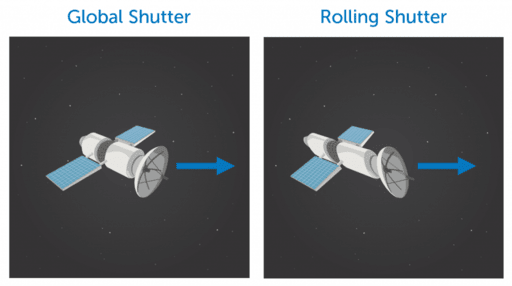 Figure 3: An object moving quickly from left to right during rolling shutter acquisition
Figure 3: An object moving quickly from left to right during rolling shutter acquisition
can appear 'skewed ' as the acquisition of the different rows occurs at different times
during the object 's motion.
The rolling shutter effect can be lessened with an elegant electronic design, at Teledyne Photometrics our newer CMOS cameras such as the Kinetix have a significantly faster line time in order to reduce the time delay, allowing for high-speed imaging of dynamic, fast samples.
Having said this, these artifacts can be avoided entirely when using a global shutter, which may be key for certain applications. However, as the rolling shutter artifact is mostly just an issue for high-speed samples, and the fastest cameras on the market are typically CMOS cameras, the concept of a global shutter CMOS appears to be a good combination for extreme speed imaging. However, global shutter CMOS cameras are far rarer than rolling shutter CMOS cameras, with the vast majority of DSLRs and smartphone cameras featuring a rolling shutter CMOS (try taking a video of a plane propeller or similar moving object with your phone to see the rolling shutter artifact).
Front- or Back-Illumination
Producing highly sensitive global shutter CMOS cameras is an even greater challenge due to the differences between front and back-illumination sensor architectures.
Our Prime and Kinetix CMOS camera families are back-illuminated, meaning that excitation light from samples immediately hits the light-sensitive silicon layer, increasing the quantum efficiency to near-perfect 95% at peak. This increase in QE makes these cameras far more sensitive, so back-illumination has become an industry standard since Teledyne Photometrics pioneered this technology with the Prime 95B.
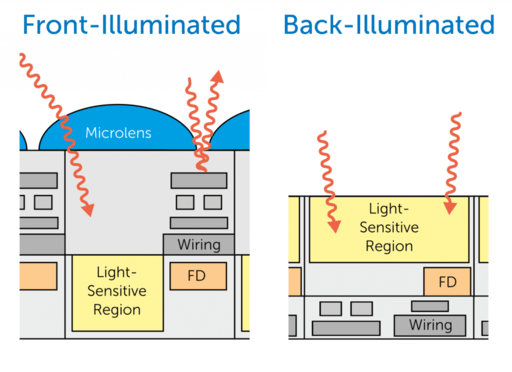 Figure 4: A comparison of pixel layouts in front vs back-illuminated CMOS sensors.
Figure 4: A comparison of pixel layouts in front vs back-illuminated CMOS sensors.
For front-illuminated cameras, circuitry is on top of the light-sensitive area, and microlenses
attempt to improve collection efficiency. In back-illuminated sensors, the light-sensitive
surface is directly exposed to light.
However, in order to have a global shutter, additional electronics are needed on the sensor and this shutter type is typically most suitable for front-illuminated sensors (typically limited to 70-80% QE). For the current industry, the addition of a global shutter causing a loss of 10-20% of signal was not worth it, and as a consequence most CMOS cameras are back-illuminated and use rolling shutters, such as our Prime and Kinetix lines. But the use of a rolling shutter does not eliminate the possibility of exposing all rows simultaneously, as explored by our pseudo-global shutter.
Pseudo-Global Shutter
Our pseudo-global shutter is a mode (also termed 'All Rows Mode ') that can be activated with our Prime and Kinetix rolling shutter cameras, and is a custom mode that reads out all rows of the sensor simultaneously, as seen in Fig.5. This achieves global illumination with a rolling shutter CMOS and a triggered light source.
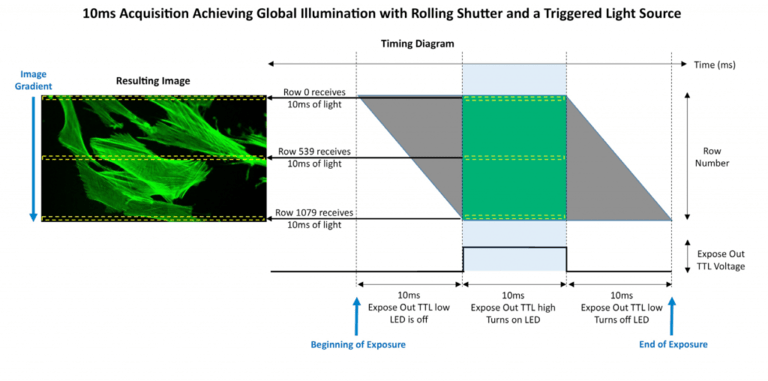 Figure 5: Pseudo-global shutter or All Rows Mode. In this mode, exposure is matched to the readout on each row by controlling
Figure 5: Pseudo-global shutter or All Rows Mode. In this mode, exposure is matched to the readout on each row by controlling
the light source based on the camera frame time. Here, illumination only starts once all rows can be exposed (the green section).
This allows for simultaneous sensor readout while still enjoying the sensitivity benefits of a back-illuminated sensor, but while this mode keeps the exposure time the same, it results in a drop in frame rate. With the main advantage of CMOS being speed, pseudo-global shutter may only be suitable for certain applications, especially as hardware triggering is involved. All three modes discussed here are highlighted in Fig.6.
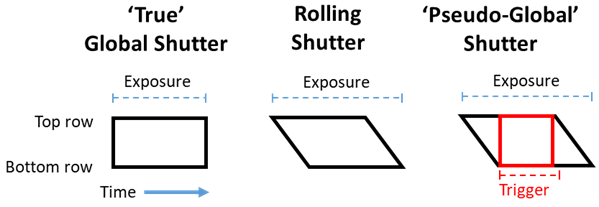 Figure 6: Different readout formats for scientific cameras. Most CCD/EMCCDs have a true global
Figure 6: Different readout formats for scientific cameras. Most CCD/EMCCDs have a true global
shutter, and readout from all pixels simultaneously as they are exposed to light. Most CMOS sensors
have a rolling shutter, where readout is staggered by row. Our CMOS cameras offer pseudo-global
shutter or All Rows Mode, where a trigger controls the light source and exposes all rows simultaneously
when possible, at the cost of speed.
Summary
Scientific cameras that use electronic shutters typically adopt a global shutter or rolling shutter format, with the former used mostly by CCD/EMCCD cameras and the latter used by the more modern CMOS camera format. While global shutter can read out the whole sensor, rolling shutters can offer great speed at the cost of additional artifacts, but for the majority of applications, these artifacts won 't affect experimentation, due to the extreme speeds and dynamism a sample would require to outrun the fastest CMOS cameras such as the Kinetix.
Further Reading
Back To Advanced Imaging
Join The Knowledge and Learning Hub